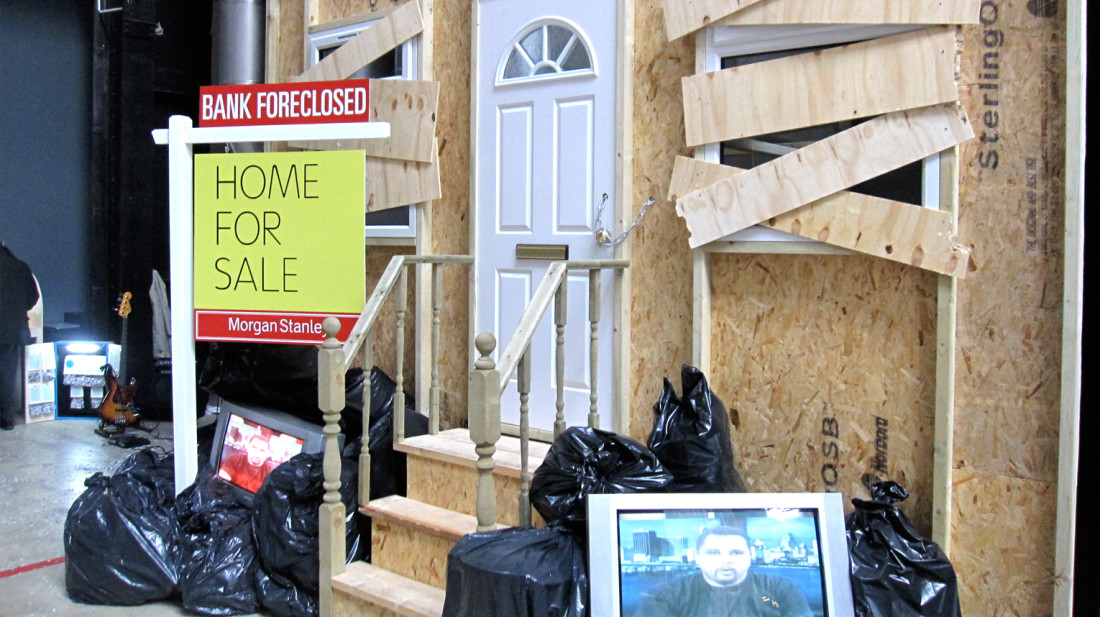
The Limits of Collaboration
Essay by Astra Taylor with Not An Alternative
“Ideological victory can look just like ideological defeat. When one’s enemy accepts one’s terms, one’s point of critique and resistance is lost, subsumed. The dimension of antagonism (fundamental opposition) vanishes.” – Jodi Dean
Today everyone sings the praises of participation: leading academics hail active audiences who remix commercial culture, established curators wax poetic about relational aesthetics, web 2.0 executives and marketing experts applaud openness and connectivity, conservative economists have discovered the benefits of collaboration. Interactivity, access, engagement are the highest ideals of the new order, ideals taken by many to be synonymous with democracy. Participation is perceived as politics, and vice versa.
Not An Alternative’s installation at the Tate Modern’s No Soul for Sale show was inspired by artist Rikrit Taravanija’s influential work “Tomorrow is Another Day,” a piece that welcomed people into a gallery remodeled as an apartment, where they were met with free food, interesting conversation, even a bed to rest on. As critic Claire Bishop points out, the tradition of socially engaged art that Taravanija is part of assumes that “the creative energy of participatory practices rehumanizes – or at least de-alienates – a society rendered numb and fragmented by the instrumentality of capitalism.” The problem, as Jerry Saltz complacently observed, is that many of the people who accepted Taravanija’s invitation were art world denizens – dealers, curators, creators, and wannabes – who already felt entitled to access the space.
By offering us the padlocked façade of a foreclosed home Not An Alternative’s “Tomorrow is Another Day (After the Economic Crisis)” demands we take an outsider’s view, that we remain in a space of contemplation not engagement, and consider those excluded from the uncritical celebration of participation. What about the families who have lost their homes as a consequence of the subprime mortgage crisis? What about people who don’t visit museum exhibitions, or frequent the proper websites, who are not invited into social networks because they lack the necessary technological or cultural capital?
The fantasy of participation is a powerful one, postulating, as it does, the invitation and inclusion of everyone, everywhere. The Internet, we are told, makes this dream a reality, erasing borders and distinctions, smoothing out differences and hierarchies. We are all equal now, because we believe everyone’s voice can be heard. Political theorist Jodi Dean calls this “communicative capitalism,” an ideological formation that fetishizes speech, opinion, and participation: “It embeds us in a mindset wherein the number of friends one has on Facebook, the number of page-hits one gets on one’s blog, and the number of videos on one’s YouTube channel are key markers of success, and details such as duration, depth of commitment, corporate and financial influence, access to structures of decision-making, and the narrowing of political struggle to the standards of do-it-yourself entertainment culture become the boring preoccupations of baby boomers stuck in the past.” Welcome to the age of interactivity, where participation means everything and nothing. Every action is subsumed by this new framework, including our very sociability – our likes and desires, our heartfelt comments and curiosities, our mindless searches and indiscriminate clicks – which are mined, analyzed, and monetized by the new power brokers.
“Tomorrow is Another Day (After the Economic Crisis)” asks us not to ignore the wave of foreclosures caused by the housing bubble, one that preyed upon people’s overwhelming desire to participate in the American dream of home ownership. The evictions and dispossessions that resulted illustrate just how elusive and cruel the fantasy of inclusiveness can be when unbuttressed by fair social and economic policy. But Not An Alternative does not stop with the housing bubble (one that, we are reminded, was sponsored by institutions like Morgan Stanley, Merrill Lynch, and Bank of America, all corporate sponsors of this museum); their installation subtly calls attention to the emergence of a new bubble, one that has been referred to as “relationship inflation.” As media theorist Trebor Scholz points out, participation is the oil of the digital economy. In this era of social networks, we run the risk of making too much out of the relationships we have, while unthinkingly excluding populations beyond our immediate consciousness. We must ask ourselves: How deep do our connections go? How much dissensus do we tolerate? How homogenous is the social field we’ve selected for ourselves?
Architect and theorist Markus Meisson eloquently interrogates the consensus-seeking rhetoric of participation, which he says too often assumes a romantic view of “harmony and solidarity.” Meisson writes that he “would like to promote an understanding of conflictual participation, one that acts as an uninvited irritant.” Here, at Tate Modern, Not An Alternative acts as just such an irritant, a presence that provokes us to remember those who have not received an invitation to this space, those who may be unwelcome or ill at ease. And by permitting the viewer to contemplate and deliberate — by granting a respite from the pressure to collaborate, to immerse and implicate ourselves in the moment — we are invited to take a longer view, to reflect on the limits of participation (something rarely experienced as the free and limitless opportunity we would like to imagine) and consider other, more contentious, forms of collective action that may be possible.



No Comments